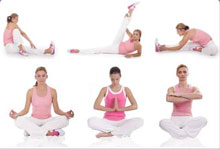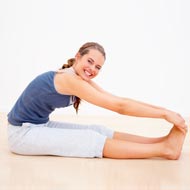- Raja yoga
- Yoga Stretches
- Jivamukti Yoga Poses
- Yoga Tree Pose
- Sun and Moon Yoga
- Wind Removing Pose
- Hare Pose
- Accomplished Pose
- Urdhva Mukha Pinch Mayurasana
- Revolved Abdomen Pose
- Raised Foot Pose
- Scorpion Pose
- Butterfly Pose
- Half Tortoise Pose
- Revolved Twist
- Balancing Stick Pose
- Cat Pose
- Supported Shoulderstand
- Crane Pose
- Handstand
- Happy Baby Pose
- Firefly Pose
- Scale Pose
- Side Plank Pose
- Upward Facing Two-Foot Staff Pose
- Reclining Big Toe Pose
- Stick Pose
- Revolved Head-to-Knee Pose
- Full Boat Pose
- Upward Extended Feet Pose
- Yoga arm balance poses
- Core Yoga
- Inversion Yoga Poses
- Seated And Twist Yoga
- Horse Pose
- Seated Wide Angle Pose
- The Compass Pose
- Half Crow Pose
- Bound Half Moon Pose
- Lotus Pose
- Reverse Warrior Pose
- Fixed Firm Pose
- Back-bend Poses
- Forward bend Poses
- Sarvangasana
- Ashtanga Yoga Poses
- Warm up poses
- Seated Poses
- Seated Forward Bends
- Chair Poses
- Standing Poses
- Standing Balancing poses
- Yoga Asanas
- Hatha Yoga Asanas
- Yoga Postures Online
- Partner Yoga Poses
- Anusara Yoga Poses
- Advanced Yoga poses
- Restorative Yoga Poses
- Kids Yoga Poses
- Beginning Yoga Postures
Cobbler Pose
Yoga is a simple, yet complex, form of exercise that affects the mental, physical, and spiritual health of the body. Originating in India, this alternative exercise form has gained popularity in the West as well, owing to its holistic benefits.
Yoga is also often used as an alternative method of treatment with regard to lifestyle diseases.
The Cobbler Pose (Baddha Konasana) also known as Bound Angle Pose is an extremely simple pose with diverse benefits. The pose derives its name from the Sanskrit words ‘baddha’ meaning ‘bound, chained, restrained or caught’ and ‘kona’ meaning ‘corner or angle’. The cobbler Pose is an excellent exercise for the hips, groin and thighs.
Steps
Cobbler pose steps are as follows:
- Sit on the floor with your legs straight. You can raise your pelvis on a blanket if the groin or hips are tight.
- Bring the soles of the feet together towards the pelvis and hold the ankles.
- Hold the big toe of each foot with the first finger, second finger, and thumb of each hand. You can also use each hand to grip the ankles or shins if it is not possible to reach the toes.
- Do not push down on the knees. You can put the cushions under the sitting bones to balance the pelvis.
- Exhale and slowly double up forward, stretching your spine as you do so. Maintain the length of your torso and stretch as far as you can do so without any strain.
- Stay in the pose for 1 to 5 minutes; inhale and slowly sit up.
Precautions
Cobbler Pose precautions include:
- Avoid the pose if you suffer from a hip or shoulder injury.
- Place a yoga blanket under the outer thigh in case of knee or groin discomfort.
- Avoid the Cobbler Pose if you have just had a baby. If you have been practicing this pose before the delivery, let pelvic muscles regain their strength and restart the practice after consulting the doctor.
Beginner’s Tip
Although the Cobbler Pose is a relatively easy pose, it may seem difficult for beginners. A beginner’s tip for the Cobbler Pose would be tosit on a support (a folded towel or a cushion) particularly if it is uncomfortable to lower the knees close to the floor or if the back is rounded. Additionally, beginners should avoid fast, jerky movements. Make your movements as smooth and easy as possible. Distributing the weight equally to maintain the balance in the pelvic area is also important.
Benefits to specific body parts
Some of the benefits of the Cobbler Pose include;
- Improves flexibility and strengthens the groin, knees, and inner thighs.
- Stimulates the abdominal organs, specifically those related to the digestive system.
- Improves the functioning of the prostate glands and ovaries, bladder, and kidneys by stimulating the organs.
- Stimulates the heart muscles.
- Opens up the lower back region.
- Calms the entire pelvic area.
Therapeutic Applications
- Helps alleviate depression, anxiety and fatigue.
- Eases menstrual cramps.
- Regular practice in the course of pregnancy helps lessen the labor pains.
- Improves digestion.
- Rejuvenates the heart and improves blood circulation.
- Eases mood swings and reduces fatigue during menopause.
- Relieves sciatica pain.
Cobbler Pose Variations
One of variations of the Cobbler Pose is the Goddess Pose or Reclining Bound Angle Pose. The Goddess pose (Supta Baddha Konasana) is the principal variation of the Cobbler Pose. It is a reclined, corrective posture and provides similar, if not more benefits. To do this pose, once you have pulled your feet in toward your groin, instead of holding the toes/ankles and bending forward, you need to exhale and lean backwards, bringing the elbows towards the floor. Eventually, lower the entire torso all the way to the floor and stretch your hands out one other side of you, palms facing up. Remain in this position for 1 to 5 minutes and keep your breathing relaxed. If it is inconvenient to recline on the floor, support the spine with a pack of folded blankets or a bolster. To exit this position, turn your body to one side and then use your arms to lift your body back up straight.
Other variations of the Goddess Pose itself include:
- Goddess Pose with a Strap: Take a yoga strap around your waist while seated in Cobbler Pose. Coil the strap so that it passes below the feet and stays under the ankles. Keep the knees out to either side and tighten the strap as per convenience. Recline into Goddess Pose.
- Goddess Pose with a Block: Lay a block on the yoga mat so that the rib cage rests on it in the reclined position. Lie down. Adjust the block as per convenience and comfort.
Preparatory Poses
Some of the preparatory poses for the Cobbler Pose include those which help build strength and improve flexibility of those muscles involved in performing the Cobbler Pose.
- Reclined Big Toe Pose (Supta Padangusthasana), which stretches the thighs and calves.
- Hero Pose (Virasana), which increases flexibility in the knees, hips and legs.
- Tree Pose (Vrksasana), which strengthens the calves, ankles, thighs and spine and stretches the groin, inner thigh, chest, and shoulders.
Follow up Poses
Since the Cobbler Pose is a simple yoga pose, there are no specific follow up poses for it. However, you can try any of the seated stretches in yoga. Given below is one such pose.
- Seated Forward Bend (Paschimothanasan), which stretches out the abdominal area and stimulates the abdominal organs. It is a good follow up posture to the Cobbler pose.
Yoga is an extraordinary science. Countless research and studies have reinforced its qualities and benefits. It is believed to enhance both the mental and physical wellbeing. However, as with any other discipline, it is important to take proper guidance from a qualified yoga practitioner to avail maximum benefits and avoid injuries and mishaps.
 Find Pose
Find Pose

